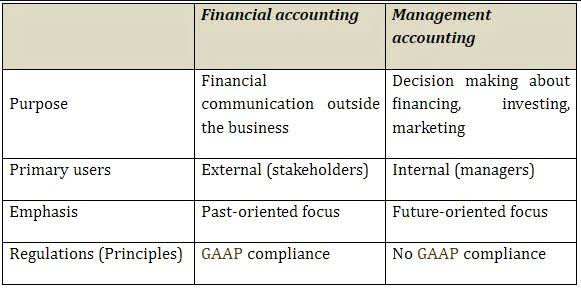Differences and Similarities of FASB and IASB Essay Example Free
The standard-setting project seeks to improve the current net asset classification scheme and information provided in financial statements and notes about an organization’s liquidity, financial performance, and cash flows. The research project will study other means of communication that not-for-profit organizations currently use in telling their financial story. Collectively, the organizations’ mission is to improve financial accounting and reporting standards so that the information is useful to investors and other users of financial reports. The organizations also educate stakeholders on how to understand and implement the standards most effectively. Firstly, the FASB focuses mainly on setting standards and rules for accounting firms and individual certified public accountants practising in the United States. One presentation today saw a contribution by the standard setters of Canada, Germany, Japan, the United Kingdom and the United States on perspectives on the financial reporting on intangibles.
This just gives you a glimpse of Six Sigma which entails more in-depth knowledge of processes and techniques. FASB is proud of itself for providing users with clear, useful, and relevant information according to their needs on financial matters. FASB stands for Financial Accounting Standards Board, which is a US-based non-profit organization. Just as the IASB oversees the FASB’s operations, IASB’s projects are also monitored by the FASB. However, the FASB may choose their level of involvement based on their level of interest in the addressed topic.
The FASB is part of the Financial Accounting Foundation (FAF), which is overseen by a board of trustees, and is independent of all businesses and professional organizations. The IASB is overseen by trustees as well, but it is accountable to a Monitoring Board of capital market authorities. It also is funded by market participants, but is funded by relevant regulatory authorities as well.
Difference Between the IASB and FASB
With operations based in different countries that operate under different accounting principles and with varying currencies, there has been a need for the accounting principles and standards to be converged. This has been through various meetings between the International Accounting Standards Board (IASB) and US Financial Accounting Standards Board (FASB), two boards which determine these accounting standards. This paper therefore evaluates the history of the two boards and their relationship and looks at IASB equivalents to FASB original pronouncements. It also describes how a Master of Science in Accounting wouldprepare a student for an accounting profession. The seven members of the FASB serve full time and, to foster their independence, are required to sever connections with the firms or institutions they served before joining the Board. Norwalk Agreement, which marked a significant step towards formalising their commitment to the convergence of US and international accounting standards.
This often leads to variations in consolidation scope compared to IFRS, as entities may include or exclude certain subsidiaries based on specific thresholds. Joint ventures are typically accounted for using the equity method, reflecting the investor’s share of the joint venture’s net income or loss. For example, IFRS allows for the classification of expenses either by nature or by function, providing companies with the flexibility to choose the most relevant presentation for their operations. GAAP typically requires a more detailed classification, often leading to a more granular breakdown of expenses and other financial elements.
Impact on International Reporting
While both organizations have the goal of improving financial reporting, there are some key differences between them. The International Accounting Standards Board (IASB) and the Financial Accounting Standards Board (FASB) are two separate organizations that develop and issue accounting standards. The treatment of financial instruments under IFRS and GAAP reveals a complex landscape shaped by differing methodologies. IFRS 9 introduces a forward-looking ‘expected credit loss’ model for impairment, emphasizing timely recognition of credit losses. This requires entities to assess potential credit losses at the inception of a financial asset and continually update these expectations based on current conditions and forecasts.
In October 2002, the FASB and the IASB issued the Norwalk Agreement, which marked a significant step towards formalising their commitment to the convergence of US and international accounting standards. Past initiatives include the Norwalk Agreement and various joint projects by the IASB and FASB aimed at aligning standards in key areas such as revenue recognition and leases. IFRS requires most leases to be capitalized on the balance sheet, while GAAP differentiates between operating leases and finance leases, with different accounting treatments for each. In contrast, GAAP employs a risk-and-rewards model, which sometimes leads to different consolidation outcomes. Under GAAP, entities are required to consolidate subsidiaries where they have a controlling financial interest, typically indicated by ownership of more than 50% of the voting shares.
In May 2015 the SEC acknowledged that “investors, auditors, regulators and standard-setters” in the United States did not support mandating International Financial Reporting Standards Foundation for all U.S. public companies. There was whats the relationship between iasb and fasb “little support for the SEC to provide an option allowing U.S. companies to prepare their financial statements under IFRS.” However, there was support for a single set of globally accepted accounting standards. The FASB and IASB planned meetings in 2015 to discuss “business combinations, the disclosure framework, insurance contracts and the conceptual framework.” As of 2017, there were no active bilateral FASB/IASB projects underway.
They both though put a lot of emphasis on income statements, balance sheet, statement of changes in equity and cash flow statements as key reports that are important in financial reporting. Over the past decade these two boards which determine the accounting standards in the world have been working towards ensuring that the financial reporting all over the world converges. Besides, these three organizations are also responsible for educating stakeholders on how to effectively comprehend and implement those standards.
IFRS vs. GAAP Differences: Reconciling Global Accounting Standards
Despite challenges and delays, these collaborative efforts have resulted in substantial progress and greater harmonization of accounting practices. Reconciling IFRS and GAAP presents significant challenges due to fundamental differences in their underlying principles. IFRS, being more principles-based, allows for greater flexibility and interpretation, whereas GAAP is rules-based, providing more detailed guidelines. This divergence can lead to inconsistencies in financial reporting and difficulties in standardizing global practices. IFRS is considered more principles-based, allowing for greater interpretation and flexibility in financial reporting. Conversely, GAAP is more rules-based, providing detailed guidelines and standards for various accounting scenarios.
However, since many companies operate globally, the IASB and FASB often work together to contribute toward global accounting standards. The FASB also actively participates in the development of IFRS, providing input on IASB projects using the IASB’s Accounting Standards Advisory Forum (ASAF) and other means. This agreement laid the groundwork for numerous joint projects aimed at aligning key accounting standards and reducing discrepancies. Despite these efforts, full convergence has not yet been achieved, and differences remain in areas such as revenue recognition, lease accounting, and financial instruments. However, the collaboration between FASB and IASB continues to be pivotal in narrowing the gap and promoting a more cohesive global accounting environment.
The IASB’s IFRS employs a principles-based framework, focusing on overarching objectives and allowing flexibility in interpretation. This approach suits entities operating in diverse international environments, accommodating varying business practices and economic conditions. The agreement has undergone several changes due to difficulties and disagreements surfacing between the IASB and FASB Boards.
What Is The Relationship Between FASB and IASB?
- This approach ensures that the financial statements reflect the true economic substance of the business relationships.
- Regulatory bodies such as the IASB and FASB have engaged in numerous joint projects to align their standards.
- These 10 questions help a new student of accounting to understand the basic premise of accounting and how it is applied to the business world.
- The differences between these two standards reflect diverse financial cultures and regulatory environments.
- Convergence opponents have said that without vision and commitment to convergence, the standards wouldn’t be effective unless they were enforced or provide significant benefits.
- IFRS provides more flexibility in the presentation and classification of financial statements, while GAAP has more prescriptive requirements for line items and formats.
Similarly, companies offering software as a service (SaaS) must determine if subscriptions are distinct performance obligations or should be bundled with other services, affecting the timing and amount of revenue recognized. The short-term convergence is an active agenda project conducted jointly by FASB and IASB — expected to result in one or more standards that will achieve convergence in certain areas. The project is limited to the differences between US GAAP and IFRS, where a high-quality solution seems achievable.
As we mentioned earlier in this article, IASB and FASB both work toward the goal of developing and enforcing financial reporting standards for publicly held companies. IFRS uses a control-based approach for consolidation, while GAAP uses a risk-and-reward model. This can lead to differences in which entities are consolidated in financial statements. IFRS is principles-based, focusing on the overall fairness and accuracy of financial statements, while GAAP is rules-based, providing detailed guidelines and rules for reporting. Technological advancements and the rise of digital finance also play a crucial role in shaping the future prospects of accounting standards. Automation, AI, and blockchain technology can streamline compliance and reporting processes, making it easier for companies to adopt and adhere to a unified set of standards.
- The FASB currently boasts over 60 staff members that are collectively responsible for assisting the board members in their accounting and financial reporting duties.
- When comparing their origin, the International Accounting Standards Board came into existence on April 1, 2001.
- FASB is proud of itself for providing users with clear, useful, and relevant information according to their needs on financial matters.
- However, despite the crucial role of Mark C. Suchman’s, 1995 article in the research of private accounting standard setters’ legitimacy, few studies have reviewed the IASB’s legitimacy based on Suchman’s framework.
Iasb Stands For International Accounting Standards Board
On its own, the FASB endeavors to set the highest-quality standards by way of undertakings that are both robust as well as inclusive. The International Accounting Standards Board (IASB) and the Financial Accounting Standards Board (FASB) both work toward the goal of developing and enforcing financial reporting standards for publicly held companies. It sets IFRS, which is adopted by over 140 countries, including the European Union, Australia, and Canada. IFRS aims to harmonize accounting practices worldwide, facilitating comparability and transparency in financial reporting across borders. The FASB operates under the Financial Accounting Foundation (FAF), an independent private-sector organization. It consists of seven full-time members who are appointed by the FAF’s Board of Trustees.
For Company C, which is a much bigger company, assume the same multiple of five to $4,000 of EBITDA, to yield a fair value of the entire company of $20,000. Statement 157 did harmonize the definition of fair value and introduced the concept of “levels of input” to valuation estimates. Inputs to valuation estimates are characterized as Level One, Two or Three, each denoting the “observability” of the inputs in the marketplace. Level Two determines fair value by looking at observable information in the marketplace.
Board members and staff are focused on the needs of investors, other capital markets participants, and the public interest when it comes to financial accounting and reporting. They all possess a background in investing, accounting, finance, education and research. Regarding the convergence issue, we must remember that the regulatory environment in the U.S. is quite a bit different than outside the U.S. The PCAOB publishes an annual report identifying situations in which the auditor failed to follow applicable audit standards or properly apply accounting standards. So if the sensitivity disclosure rules were implemented in the U.S., the amount of effort going in to that sensitivity disclosure in the U.S. arguably would be much, much greater.











